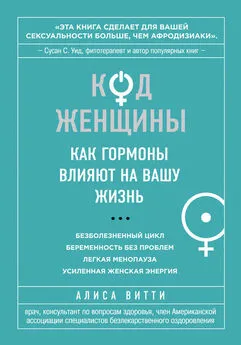Сатчин Панда - Циркадный код. Как настроить свои биологические часы на здоровую жизнь
- Название:Циркадный код. Как настроить свои биологические часы на здоровую жизнь
- Автор:
- Жанр:
- Издательство:Попурри
- Год:2019
- ISBN:978-985-15-3991-4
- Рейтинг:
- Избранное:Добавить в избранное
-
Отзывы:
-
Ваша оценка:
Сатчин Панда - Циркадный код. Как настроить свои биологические часы на здоровую жизнь краткое содержание
Для широкого круга читателей.
Циркадный код. Как настроить свои биологические часы на здоровую жизнь - читать онлайн бесплатно ознакомительный отрывок
Интервал:
Закладка:
14. E. J. van Someren et al., «Long-Term Fitness Training Improves the Circadian Rest-Activity Rhythm in Healthy Elderly Males», Journal of Biological Rhythms 12, no. 2 (1997): 146—56.
ГЛАВА 3. Проверьте и оцените: насколько оптимален ваш циркадный код?
1. F. C. Bell and M. L. Miller, «Life Tables for the United States Social Security Area 1900–2100», Social Security Administration, https://www.ssa.gov/oact/NOTES/as120/LifeTables_Body.html.
2. C. R. Marinac et al., «Prolonged Nightly Fasting and Breast Cancer Prognosis», JAMA Oncology 2, no. 8 (2016): 1049—55.
3. A. J. Davidson et al., «Chronic Jet-Lag Increases Mortality in Aged Mice», Current Biology 16, no. 21 (2006): R914—16.
4. D. C. Mohren et al., «Prevalence of Common Infections Among Employees in Difef rent Work Schedules», Journal of Occupational and Environmental Medicine 44, no. 11 (2002): 1003—11.
5. N. J. Schork, «Personalized Medicine: Time for One-Person Trials», Nature 520, no. 7549 (2015): 609—11.
6. B. J. Hahm et al., «Bedtime Misalignment and Progression of Breast Cancer», Chronobiology International 31, no. 2 (2014): 214—21.
7. E. L. McGlinchey et al., «The Effect of Sleep Deprivation on Vocal Expression of Emotion in Adolescents and Adults», Sleep 34, no. 9 (2011): 1233— 41.
8. S. J. Wilson et al., «Shortened Sleep Fuels Inflammatory Responses to Marital Conflict: Emotion Regulation Matters», Psychoneuroendocrinology 79 (2017): 74–83. 9. S. Gill and S. Panda, «A Smartphone App Reveals Erratic Diurnal Eating Patterns in Humans That Can Be Modulated for Health Benefits», Cell Metabolism 22, no. 5 (2015): 789—98.
10. Ibid.
11. N. J. Gupta, V. Kumar, and S. Panda, «A Camera-Phone Based Study Reveals Erratic Eating Pattern and Disrupted Daily Eating-Fasting Cycle among Adults in India», PLoS ONE 12, no. 3 (2017): e0172852.
12. M. Ohayon et al., «National Sleep Foundation’s Sleep Quality Recommendations: First Report», Sleep Health 3, no. 1 (2017): 6—19.
13. M. Hirshkowitz et al., «National Sleep Foundation’s Sleep Time Duration Recommendations: Methodology and Results Summary», Sleep Health 1, no. 1 (2015): 40–43.
14. M. Hirshkowitz et al., «National Sleep Foundation’s Updated Sleep Duration Recommendations: Final Report», Sleep Health 1, no. 4 (2015): 233—43.
ГЛАВА 4. Циркадный код для улучшения ночного сна
1. M. Hirshkowitz et al., «National Sleep Foundation’s Sleep Time Duration Recommendations: Methodology and Results Summary», Sleep Health 1, no. 1 (2015): 40–43.
2. M. Hirshkowitz et al., «National Sleep Foundation’s Updated Sleep Duration Recommendations: Final Report», Sleep Health 1, no. 4 (2015): 233— 43.
3. D. F. Kripke et al., «Mortality Associated with Sleep Duration and Insomnia», Archives of General Psychiatry 59, no. 2 (2002): 131—36.
4. G. Yetish et al., «Natural Sleep and Its Seasonal Variations in Three Pre-Industrial Societies», Current Biology 25, no. 21 (2015): 2862—68.
5. H. O. de la Iglesia et al., «Access to Electric Light Is Associated with Shorter Sleep Duration in a Traditionally Hunter-Gatherer Community», Journal of Biological Rhythms 30, no. 4 (2015): 342—50. 6. A. M. Williamson and A. M. Feyer, «Moderate Sleep Deprivation Produces Impairments in Cognitive and Motor Performance Equivalent to Legally Prescribed Levels of Alcohol Intoxication», Occupational & Environmental Medicine 57, no. 10 (2000): 649—55. 7. H. P. van Dongen et al., «The Cumulative Cost of Additional Wakefulness: Dose-Response Effects on Neurobehavioral Functions and Sleep Physiology from Chronic Sleep Restriction and Total Sleep Deprivation», Sleep 26, no. 2 (2003): 117—26. 8. R. E. Fargason et al., «Correcting Delayed Circadian Phase with Bright Light Therapy Predicts Improvement in ADHD Symptoms: A Pilot Study», Journal of Psychiatric Research 91 (2017): 105—10. 9. N. Kronfeld-Schor and H. Einat, «Circadian Rhythms and Depression: Human Psychopathology and Animal Models», Neuropharmacology 62, no. 1 (2012): 101—14.
10. M. E. Coles, J. R. Schubert, and J. A. Nota, «Sleep, Circadian Rhythms, and Anxious Traits», Current Psychiatry Reports 17, no. 9 (2015): 73.
11. S. E. Anderson et al., «Self-Regulation and Household Routines at Age Three and Obesity at Age Eleven: Longitudinal Analysis of the UK Millennium Cohort Study», International Journal of Obesity 41, no. 10 (2017): 1459—66.
12. A. W. McHill et al., «Impact of Circadian Misalignment on Energy Metabolism during Simulated Nightshift Work», Proceedings of the National Academy of Sciences of the United States of America 111, no. 48 (2014): 17302—7.
13. B. Martin, M. P. Mattson, and S. Maudsley, «Caloric Restriction and Intermittent Fasting: Two Potential Diets for Successful Brain Aging», Ageing Research Reviews 5, no. 3 (2006): 332—53.
14. S. Gill and S. Panda, «A Smartphone App Reveals Erratic Diurnal Eating Patterns in Humans That Can Be Modulated for Health Benefits», Cell Metabolism 22, no. 5 (2015): 789—98.
15. S. J. Crowley and C. I. Eastman, «Human Adolescent Phase Response Curves to Bright White Light», Journal of Biological Rhythms 32, no. 4 (2017): 334— 44.
16. J. A. Evans et al., «Dim Nighttime Illumination Alters Photoperiodic Responses of Hamsters through the Intergeniculate Leaflet and Other Photic Pathways», Neuroscience 202 (2012): 300–308.
17. L. S. Gaspar et al., «Obstructive Sleep Apnea and Hallmarks of Aging», Trends in Molecular Medicine 23, no. 8 (2017): 675—92.
18. E. Ferracioli-Oda, A. Qawasmi, and M. H. Bloch, «Meta-Analysis: Melatonin for the Treatment of Primary Sleep Disorders», PLoS ONE 8, no. 5 (2013): e63773.
ГЛАВА 5. Ограничение времени питания: настройте свои часы на снижение веса
1. C. M. McCay and M. F. Crowell, «Prolonging the Life Span», Scientific Monthly 39, no. 5 (1934): 405—14.
2. S. K. Das, P. Balasubramanian, and Y. K. Weerasekara, «Nutrition Modulation of Human Aging: The Calorie Restriction Paradigm», Molecular and Cellular Endocrinology 455 (2017): 148—57.
3. A. Kohsaka et al., «High-Fat Diet Disrupts Behavioral and Molecular Circadian Rhythms in Mice», Cell Metabolism 6, no. 5 (2007): 414—21.
4. M. Hatori et al., «Time-Restricted Feeding without Reducing Caloric Intake Prevents Metabolic Diseases in Mice Fed a High-Fat Diet», Cell Metabolism 15, no. 6 (2012): 848—60.
5. A. Chaix et al., «Time-Restricted Feeding Is a Preventative and Therapeutic Intervention against Diverse Nutritional Challenges», Cell Metabolism 20, no. 6 (2014): 991—1005.
6. A. Zarrinpar et al., «Diet and Feeding Pattern Affect the Diurnal Dynamics of the Gut Microbiome», Cell Metabolism 20, no. 6 (2014): 1006—17.
7. V. A. Acosta-Rodriguez et al., «Mice under Caloric Restriction Self-Impose a Temporal Restriction of Food Intake as Revealed by an Automated Feeder System», Cell Metabolism 26, no. 1 (2017): 267—77.e2. 8. M. Garaulet et al., «Timing of Food Intake Predicts Weight Loss Effectiveness», International Journal of Obesity 37, no. 4 (2013): 604—11. 9. S. Gill and S. Panda, «A Smartphone App Reveals Erratic Diurnal Eating Patterns in Humans That Can Be Modulated for Health Benefits», Cell Metabolism 22, no. 5 (2015): 789—98.
10. T. Moro et al., «Effects of Eight Weeks of Time-Restricted Feeding (16/8) on Basal Metabolism, Maximal Strength, Body Composition, Inflammation, and Cardiovascular Risk Factors in Resistance-Trained Males», Journal of Translational Medicine 14 (2016): 290.
11. J. Rothschild et al., «Time-Restricted Feeding and Risk of Metabolic Disease: A Review of Human and Animal Studies», Nutrition Reviews 72, no. 5 (2014): 308—18.
12. T. Ruiz-Lozano et al., «Timing of Food Intake Is Associated with Weight Loss Evolution in Severe Obese Patients after Bariatric Surgery», Clinical Nutrition 35, no. 6 (2016): 1308—14.
13. A. W. McHill et al., «Later Circadian Timing of Food Intake Is Associated with Increased Body Fat», American Journal of Clinical Nutrition 106, no. 6 (2017): 1213—19.
14. National Institute of Diabetes and Digestive and Kidney Diseases, «Digestive Diseases Statistics for the United States», https:// www.niddk.nih.gov/health-information/health-statistics/digestive-diseases.
15. McHill, «Later Circadian Timing.»
16. J. Suez et al., «Artificial Sweeteners Induce Glucose Intolerance by Altering the Gut Microbiota», Nature 514, no. 7521 (2014): 181—86.
ГЛАВА 6. Оптимизация обучения и работы
1. J. S. Durmer and D. F. Dinges, «Neurocognitive Consequences of Sleep Deprivation», Seminars in Neurology 25, no. 1 (2005): 117—29. 2. S. M. Greer, A. N. Goldstein, and M. P. Walker, «The Impact of Sleep Deprivation on Food Desire in the Human Brain», Nature Communications 4 (2013): article no. 2259. 3. R. Stickgold, «Sleep-Dependent Memory Consolidation», Nature 437, no. 7063 (2005): 1272—78. 4. T. A. LeGates et al., «Aberrant Light Directly Impairs Mood and Learning through Melanopsin-Expressing Neurons», Nature 491, no. 7425 (2012): 594—98. 5. M. Boubekri, et al., «Impact of Windows and Daylight Exposure on Overall Health and Sleep Quality of Ofifce Workers: A Case-Control Pilot Study», Journal of Clinical Sleep Medicine 10, no. 6 (2014): 603—11. 6. P. Meerlo, A. Sgoifo, and D. Suchecki, «Restricted and Disrupted Sleep: Effects on Autonomic Function, Neuroendocrine Stress Systems and Stress Responsivity», Sleep Medicine Reviews 12, no. 3 (2008): 197–210. 7. J. A. Foster and K. A. McVey Neufeld, «Gut-Brain Axis: How the Microbiome Influences Anxiety and Depression», Trends in Neurosciences 36, no. 5 (2013): 305—12. 8. S. J. Kentish and A. J. Page, «Plasticity of Gastro-Intestinal Vagal Afferent Endings», Physiology & Behavior 136 (2014): 170—78. 9. L. A. Reyner et al., «‘Post-Lunch’ Sleepiness During Prolonged, Monotonous Driving – Effects of Meal Size», Physiology & Behavior 105, no. 4 (2012): 1088—91.
10. M. S. Ganio, et al., «Mild Dehydration Impairs Cognitive Performance and Mood of Men», British Journal of Nutrition 106, no. 10 (2011): 1535— 43.
11. T. Partonen and J. Lönnqvist, «Bright Light Improves Vitality and Alleviates Distress in Healthy People», Journal of Affective Disorders 57, no. 1–3 (2000): 55–61.
12. D. H. Avery et al., «Bright Light Therapy of Subsyndromal Seasonal Affective Disorder in the Workplace: Morning vs. Afternoon Exposure», Acta Psychiatrica Scandinavica 103, no. 4 (2001): 267—74.
13. C. Cajochen et al., «Evening Exposure to a Light-Emitting Diodes (LED)-Backlit Computer Screen Affects Circadian Physiology and Cognitive Performance», Journal of Applied Physioliology 110, no. 5 (2011): 1432—38.
14. A. M. Chang et al., «Evening Use of Light-Emitting eReaders Negatively Affects Sleep, Circadian Timing, and Next-Morning Alertness», Proceedings of the National Academy of Sciences of the United States of America 112, no. 4 (2015): 1232—37.
15. M. P. Mattson and R. Wan, «Beneficial Effects of Intermittent Fasting and Caloric Restriction on the Cardiovascular and Cerebrovascular Systems», Journal of Nutritional Biochemistry 16, no. 3 (2005): 129—37.
16. R. K. Dishman et al., «Neurobiology of Exercise», Obesity 14, no. 3 (2006): 345—56.
17. E. Guallar, «Coffee Gets a Clean Bill of Health», BMJ 359 (2017):j5356.
18. R. Poole et al., «Coffee Consumption and Health: Umbrella Review of Meta-Analyses of Multiple Health Outcomes», BMJ 359 (2017):j5024.
Читать дальшеИнтервал:
Закладка:









